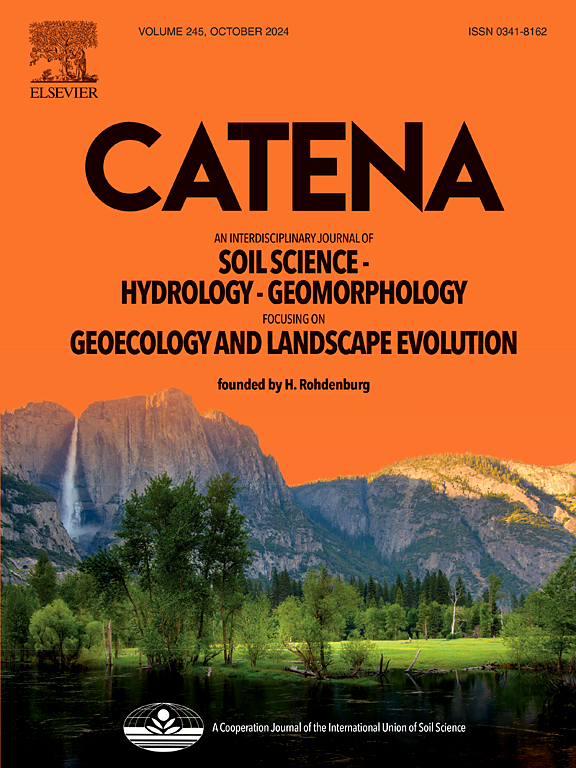Response of soil organic carbon loss to runoff hydrodynamic parameters under vegetation and terracing measures on the Loess Plateau
Zhao, Zhun , Shi, Peng , Niu, Hongbo , Bai, Lulu , Cao, Manhong , Zu, Pengju , Li, Zhanbin
2025-06-30 null null 254(卷), null(期), (null页)
Soil organic carbon (SOC) pools are significantly influenced by soil erosion, which governs the redistribution of SOC. On the Loess Plateau, land surface alterations induced by the Grain for Green Program have modulated slope runoff hydrodynamics, consequently affecting SOC loss. This study investigates the impact of runoff hydrodynamic parameters on SOC loss by evaluating two widely implemented soil and water conservation measures in the region: vegetation cover and terrace construction. Rainfall simulation experiments were conducted on seven different slope treatments: bare slope, up-slope vegetation, mid-slope vegetation, down-slope vegetation, mid-slope terraces, up-slope vegetation combined with mid-slope terraces, and down-slope vegetation combined with mid-slope terraces. Simulated rainfall at an intensity of 90 mm/h was applied using a physical model of the slope-gully system. Results indicated that slope treatments significantly modified runoff hydrodynamic parameters. Compared with the bare slope, all other treatments effectively reduced runoff hydrodynamic parameters, with the most pronounced effect observed in down-slope vegetation combined with mid-slope terraces. Additionally, down-slope vegetation combined with mid-slope terraces reduced SOC loss by 29.39 %, surpassing the reduction achieved by other measures. Furthermore, unit runoff energy consumption exhibited the strongest correlation with SOC loss across all treatments, following the functional relationship y = axb, where 'b' represents the SOC loss coefficient. Overall, slope management measures altered runoff hydrodynamic parameters characteristics, thereby influencing SOC loss. These findings provide a crucial basis for refining predictive models of SOC loss based on runoff hydrodynamic parameters.
相关推荐
- Evaluating the role of hydrological and sediment connectivity in runoff and sediment transfer on the Loess Plateau: An in-situ field rainfall experiment [2025-06-30]
- Estimation of the Potential for Soil and Water Conservation Measures in a Typical Basin of the Loess Plateau, China [2025-06-30]
- Impact of rainfall events on the river dissolved carbon transportation in a vegetation restoration watershed [2025-06-30]
- Carbon pools in forest systems and new estimation based on an investigation of carbon sequestration [2025-06-30]
- Effects of forest type on carbon storage in the hilly region of Loess Plateau, China [2025-06-30]



